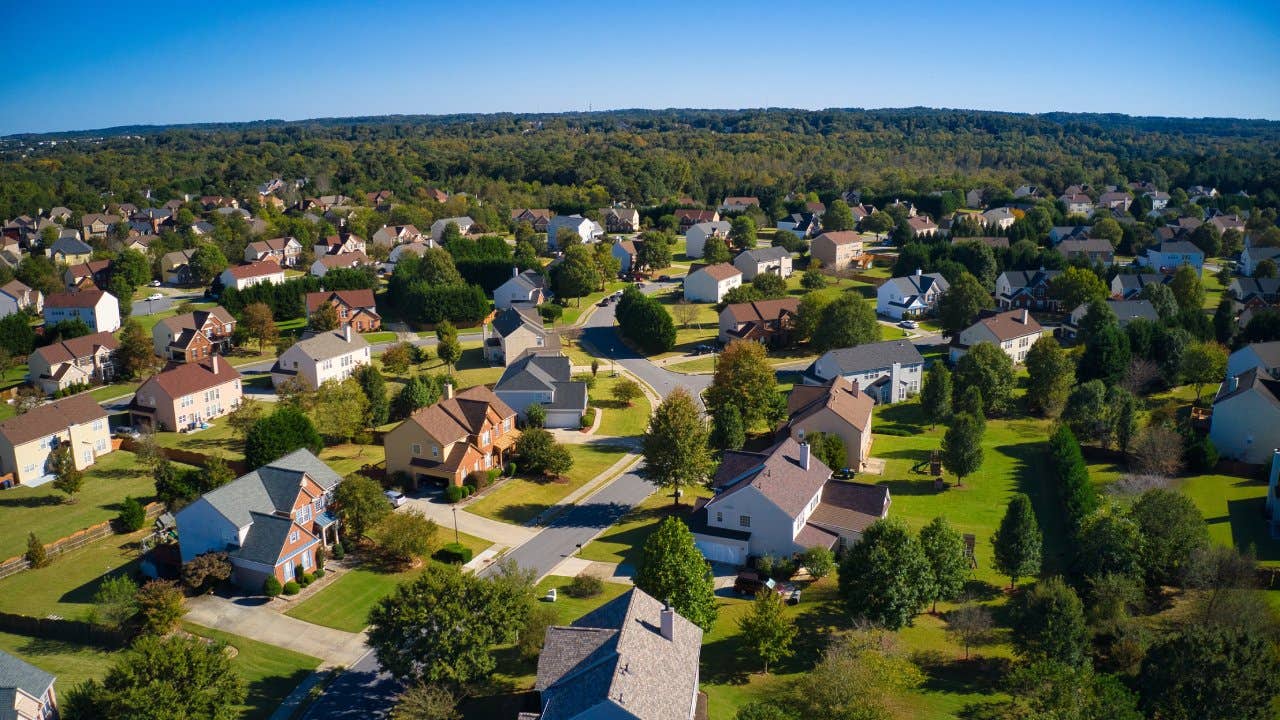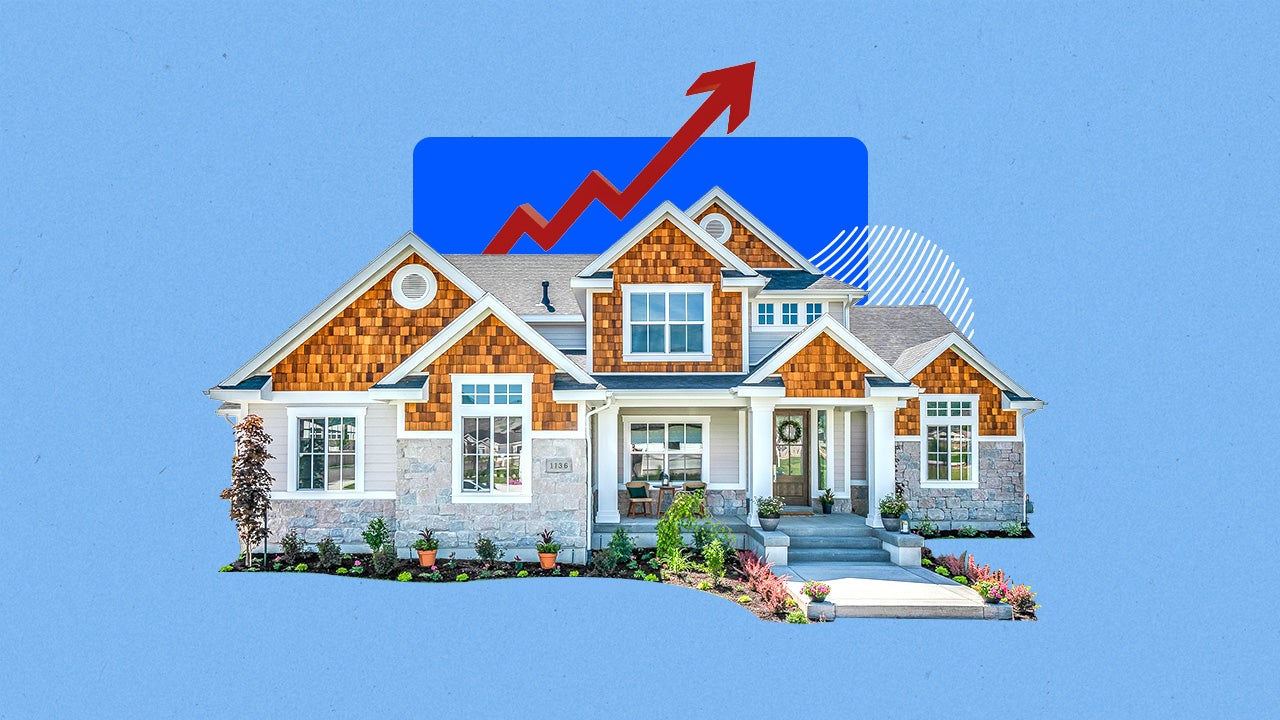Why the mortgage rate ‘spread’ is suddenly so steep

Mortgage rates have have risen in recent weeks, a move that can be contributed to the combination of stubbornly resilient inflation, a still-strong U.S. economy and a political showdown over the federal debt ceiling.
But there’s another culprit, too — one apparent only to those familiar with the inner workings of the mortgage market: the gap between 30-year mortgage rates and their closest proxy, the 10-year Treasury yield.
This interval, known to economists as “the spread,” typically runs between 1.5 and 2 percentage points. If the 10-year yield sits at 4 percent, for example, the 30-year rate should track close to 6 percent.
Consider the week of Jan. 19, 2022. Then, the average rate on a 30-year mortgage was 3.75 percent, according to Bankrate’s national survey of lenders. The 10-year Treasury, meanwhile, was yielding 1.83 percent.
In other words, spreads were perfectly normal.
Over the past year and a half, however, spreads have gotten wacky. As of May 24, the average 30-year rate in Bankrate’s survey was 6.84 percent, but the 10-year yield was just 3.7 percent. The gap had widened to 3.14 percentage points — or, in finance jargon, 314 basis points. That, according to Bankrate data, was the highest level since 2009, when the global economy was in meltdown.
Why spreads are so high
The 10-year Treasury yield serves as a benchmark for 30-year mortgages because both are long-term, low-risk forms of debt. The 10-year Treasury is considered a super-safe investment, but yields can and do bounce around. Treasury rates plunge in times of economic uncertainty — notably in the early months of the COVID pandemic — and they rise when the economic outlook improves.
Today, mortgage rate spreads are “abnormally high,” says Lawrence Yun, chief economist of the National Association of Realtors.
In fact, current spreads match or exceed those historically seen only in times of intense crises, such as the global financial crash of 2009 and in the beginning of the pandemic.
In past episodes of wide spreads, the reason has been obvious. In late 2008 and early 2009, the housing bubble had just burst, blue-chip Wall Street firms were going bust and the global economy was teetering. In the spring of 2020, the world was going into lockdown.
In both cases, lenders and investors were afraid to take on risk, and that fear translated to an extra fee to borrow.
Today’s economic situation is far different. While a recession looms, few predict a calamitous crash, and the pandemic is largely in the rearview.
“Spreads should be a lot tighter, but they’re not, because people are unsure about the future,” says L.D. Salmanson, CEO of Cherre, a real estate data firm.
One factor is that mortgage rates soared in a short timeframe, and that sort of rapid change creates uncertainty. In mid-November 2021, the average rate on a 30-year fixed loan was just 3.15 percent, according to Bankrate’s survey. By late October 2022, that number had soared to 7.12 percent.
“Rate volatility is just extraordinarily high,” says Laurie Goodman, an economist and a fellow at the Urban Institute.
What does that have to do with spreads? Consider this quirk of the mortgage market: Your lender promises you a rate weeks before you actually seal the deal. You lock in that rate today, even though you probably won’t find a home and close on the loan for another four to six weeks.
That gap creates a conundrum for the lender: If rates plunge in the coming weeks, you’ll simply ditch the loan for a better deal. If rates soar, you’ll keep the loan and congratulate yourself for locking in a rate that’s favorable to you and unfavorable to the lender.
Another, more recent factor is the threat of tumult in financial markets, as President Joe Biden and House Republicans negotiate over the federal debt. The last federal debt showdown, in 2011, caused spreads to widen, says Greg McBride, Bankrate’s chief financial analyst.
“The debt ceiling brinksmanship — or worse — seems likely to take what is already an abnormally wide spread and expand it further,” says McBride.
Fewer buyers for mortgage bonds
Mortgage originators typically package their loans and sell them off to investors as mortgage-backed securities (MBS). During the depths of the pandemic, the Federal Reserve stepped in to buy billions of dollars worth of mortgage bonds.
The Fed has stopped that bit of stimulus, and the remaining MBS buyers are insisting on a better deal. If you lock in a 6.5 percent rate today, for instance, and your lender sells your loan when rates are at 7 percent, it suddenly looks less attractive in the eyes of an investor.
“The more volatile rates are,” says Goodman, “the more expensive it is to hedge that rate.”
Take the rates for jumbo loans, which have been well below those for conforming loans. That’s atypical, and it reflects the fact that lenders often keep jumbos in their portfolios rather than selling them — and therefore have less need to guard against potential rate swings between the time they commit to the deal and actually close on the loan.
A drag on the housing market
The big takeaway here: The unusual spread is exacerbating the affordability squeeze that has dramatically slowed home sales this year. If spreads retreated to normal, the average mortgage rate wouldn’t be 6.84 percent, but 5.7 percent.
“If we just had a normal spread, the housing market would begin to revive,” says Yun.
If current rates were closer to 5.7 percent, a borrower with a $300,000 mortgage would be looking at a monthly payment of $1,741. At 6.84 percent, that payment would be $1,964, or $223 more.
“It’s a big deal,” says Goodman.






